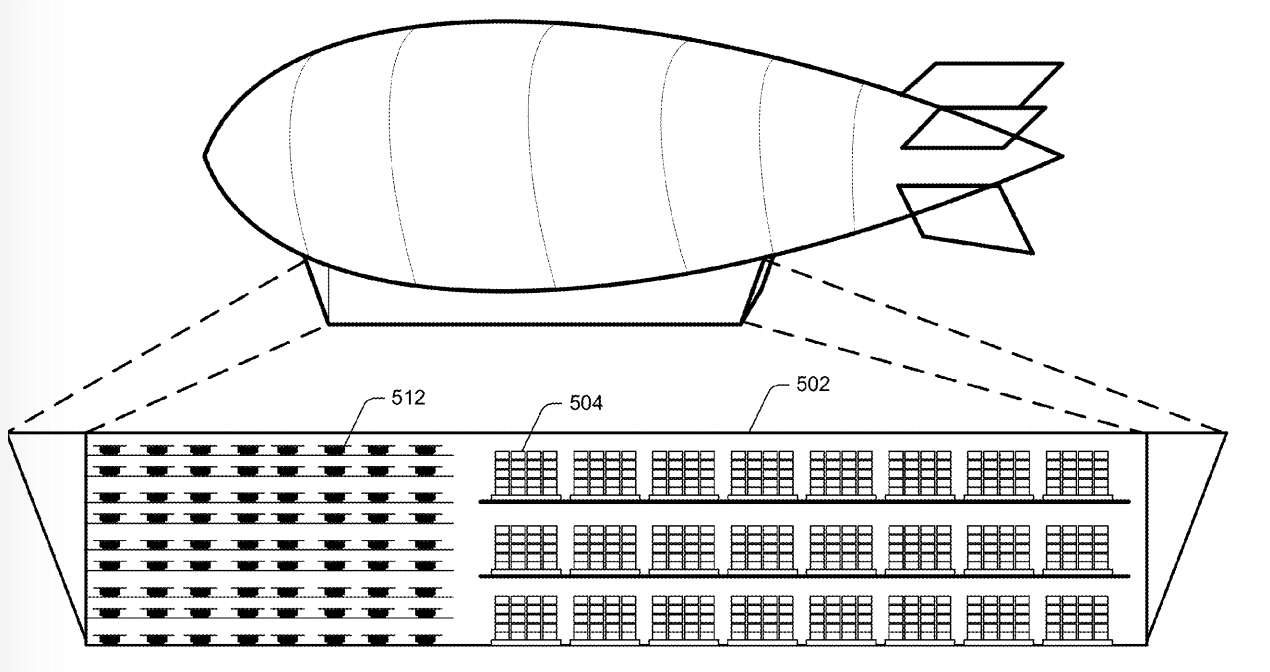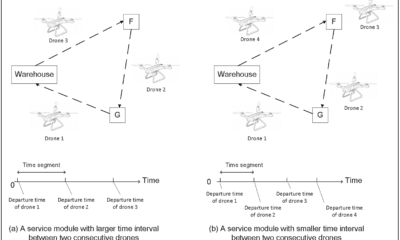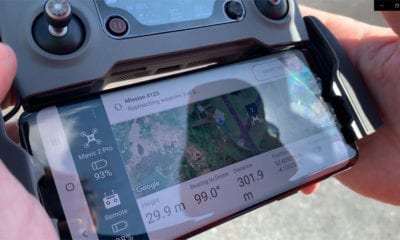
Drone Delivery
Amazon Patent Wants to Improve Drone Delivery with Floating Warehouses
Amazon the e-commerce titan and tech giant is looking to setting up a pitstop for its supply chain -warehouses that will float in the sky, and will be carried and held aloft by blimps.
Amazon aims to change the ground-based delivery system to the airspace above where drones would zip quietly overhead, carrying paper towels, toasters and printer cartridges to consumers with efficacy and in time which will lead to substantial cost savings for the $887 billion company.
The “aerial fulfillment centers” as Amazon describes them, would be serviced by a fleet of drones. “An AFC may be positioned at an altitude above a metropolitan area and be designed to maintain an inventory of items that may be purchased by a user and delivered to the user by a UAV that is deployed from the AFC,” the patent document says.The blimps, or “airships,” will stay afloat using gases such as helium, or heated air.
By allowing these AFCs to float Amazon has rid itself of the limitation of stationary fulfillment centers. Providing the AFCs, with mobility, would also drastically lower the energy required to deploy delivery drones to their final destinations. Proximity and energy efficiency are the two primary incentives. These aerial warehouses would will also store an inventory that corresponds with whatever metropolitan city it is hovering above. Additionally, customers will also be able to browse the specific list of items the specific AFC above them has in stock.
Additionally the AFCs will allow the online retailer to have items “delivered within minutes of a user placing an order,” this aerial system would not only improve the purchasing experience for its customers but also decrease operations costs for Amazon.
Stationing a floating warehouse over a city and having drone traffic released from it raises safety concerns that Amazon patents have already identified. The company has patented a system that would make a drone to fragment in case of malfunction, to reduce the falling-object hazard. Amazon has also noted that drones could fly into buildings, or be hijacked by “nefarious individuals.”
Cutting costs wherever possible is a corporate bottom line that Amazon certainly does believe in. Amazon also tirelessly ensures that the company stays ahead of in terms of innovative interaction with the end-user. The idea of placing Amazon’s own warehouses in the sky directly above its customers’ heads, while satisfying them with an exciting shopping experience, seems like a smart, albeit bold move.
The United States is still seemingly in early stages of establishing secure, thorough nationwide drone regulations to manage fleets of commercial drone traffic overhead. A combination of the right kind of regulation, governmental legislation, and corporate luck, Amazon could have warehouses stationed above major American cities in the near future, ready to deliver toothpaste and DVDs to its customers from the skies above.

























